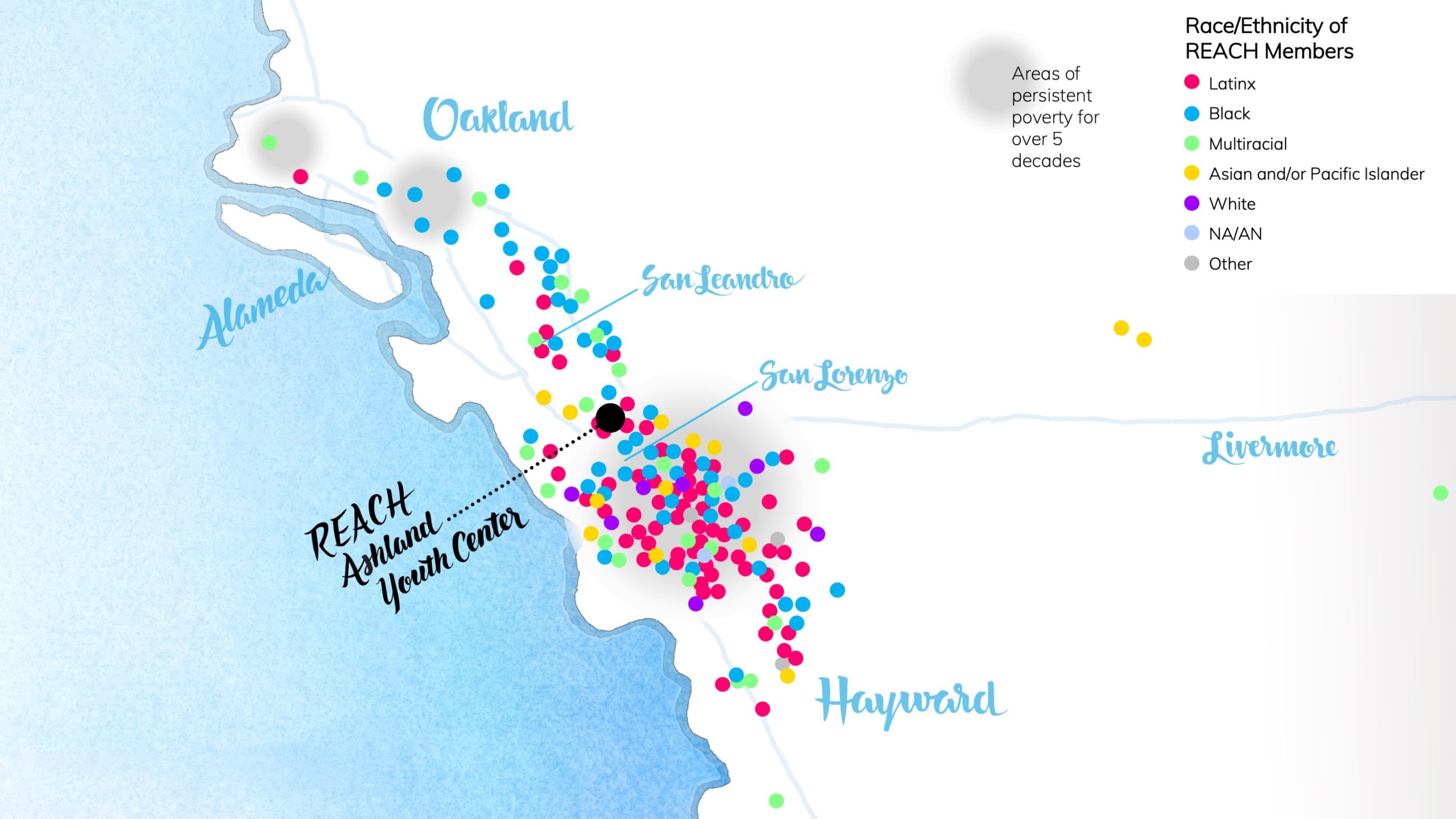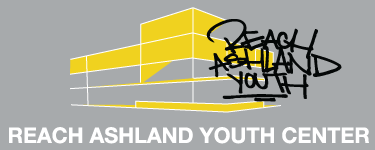
Impact

“My family had a lot of problems during the pandemic. REACH was helpful through counseling and very supportive of us…”

2,211+ health visits in FY19-20
76% Medical
4% Behavioral Health
20% Dental

In FY19-20
71% of youth reported that,
because of REACH programs,
they earned enough credits
to graduate.
Neighborhood Impact
REACH neighborhoods have long had persistent poverty,
long-standing inequities, and corresponding opportunity gaps
resulting in worse health outcomes, economic status, and other
social conditions compared to the rest of Alameda County.
REACH has had a direct impact on youth from diverse racial and ethnic
backgrounds, as illustrated below, in these underserved communities.

Resources
REACH Evaluation/Summary
2018-2019 Evaluation (pre COVID-19)
1,941 youth visited REACH and/or Fuente in FY 2018-19.
Referrals to COST. The Coordination of Services Team (COST) is a multi-disciplinary and cross-program group that identifies, triages, and provides coordinated wraparound support for youth with higher needs. Reasons youth were referred to COST included mental/emotional health (68%), social needs/referrals (38%), academics (27%), health/basic needs (13%), no reason specified (12%), and vocational support (1%).
Youth are actively involved in making decisions in their community.
Longer-term members were more likely to agree that REACH had helped them be more active in improving their community compared to newer members. Some examples of community involvement identified by youth includes participating in the Youth Leadership Council (now Youth ERA), taking leadership positions at school in the Black Student Union and Junior Committee, and helping set up the Community Arts Festival.
Youth are prepared for and engaged in jobs leading towards a career.
Over half of youth (61%) reported that participating in REACH programming had helped them get a job or internship. Also, 73% of youth said they felt prepared for a job because of participating in REACH programs. In terms of critical thinking and social-emotional skills, youth said that REACH helped them understand other people’s points of views different from their own, and this was truer for youth who had been members for more than one year.
All youth are healthy physically, mentally, and emotionally.
In terms of utilization of health center services, the reasons for youth health center visits included: medical (62%), dental (31%), behavioral health (7%). In terms of decreased substance use, 71% of youth who used alcohol, tobacco, or other drugs reported REACH helped them use substances less frequently.
Youth graduate from high school.
Youth reported that, as a result of participating in REACH programs, they earned enough credits to graduate (71%), planned to go to college (69%), were working harder in school (66%), were doing well enough in school to go to the next grade (63%), and had better attendance in school or skipped school or cut classes less (49%).
Youth are supported by safe, nurturing families and communities.
Youth reported feeling supported in the following ways:
- 93% reported the people who work at REACH listen to what they have to say;
- 93% indicated that REACH staff treat them with kindness and respect; and,
- 91% said the people who work at REACH give them encouragement.
Longer-term members were more likely to report that REACH helped them get better at something new or that was hard for them and get help sooner compared to newer members. Longer-term members and youth who visited REACH more frequently were more likely to report that REACH helped them have goals and plans for the future compared to newer members. Youth who visited REACH at least twice a week were more likely to agree that REACH helped them have goals and plans for the future compared to youth who visited REACH less than once a week.
Systems are integrated, and care is coordinated and equitable.
In terms of increased access to support and resources, 91% of youth said they knew where to go for health and wellness services (e.g., medical care, dental appointments, counselors, nutrition classes) and 80% of all youth survey participants reported that REACH helped them get help sooner than they normally would. Finally, youth reported how they would have taken care of their health problems/needs if the health center were not available: go to another doctor or nurse (52%); call their parents or go home (23%); not sure (19%); go to the hospital or emergency room (14%); nothing (8%); and, other (2%)
In Connections with supportive adults. Nearly three quarters (70%) of youth said they talked to a staff member at REACH about a personal challenge regularly or occasionally. In addition, 65% of youth reported that a REACH staff member had helped them connect with other programs or services











